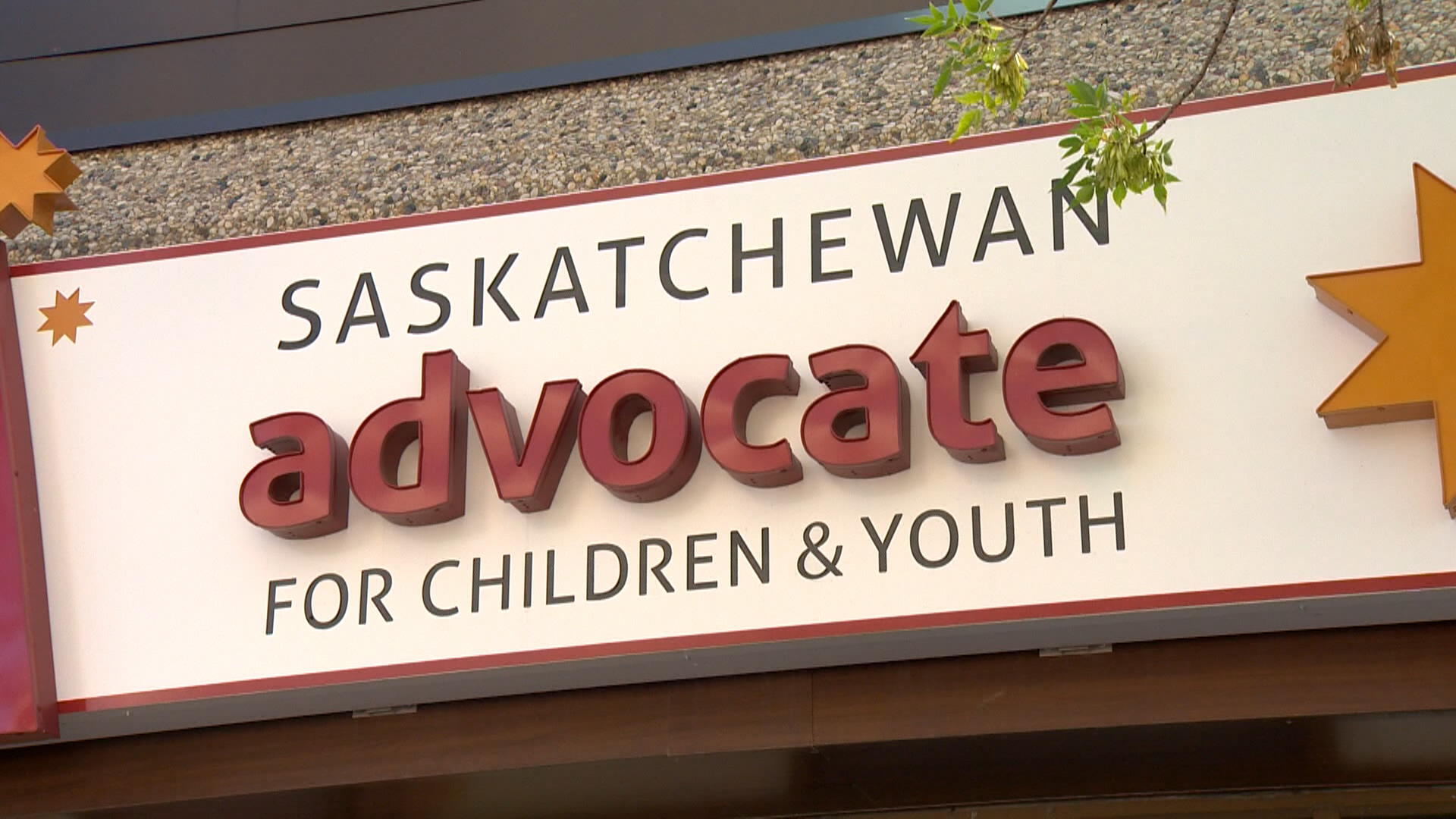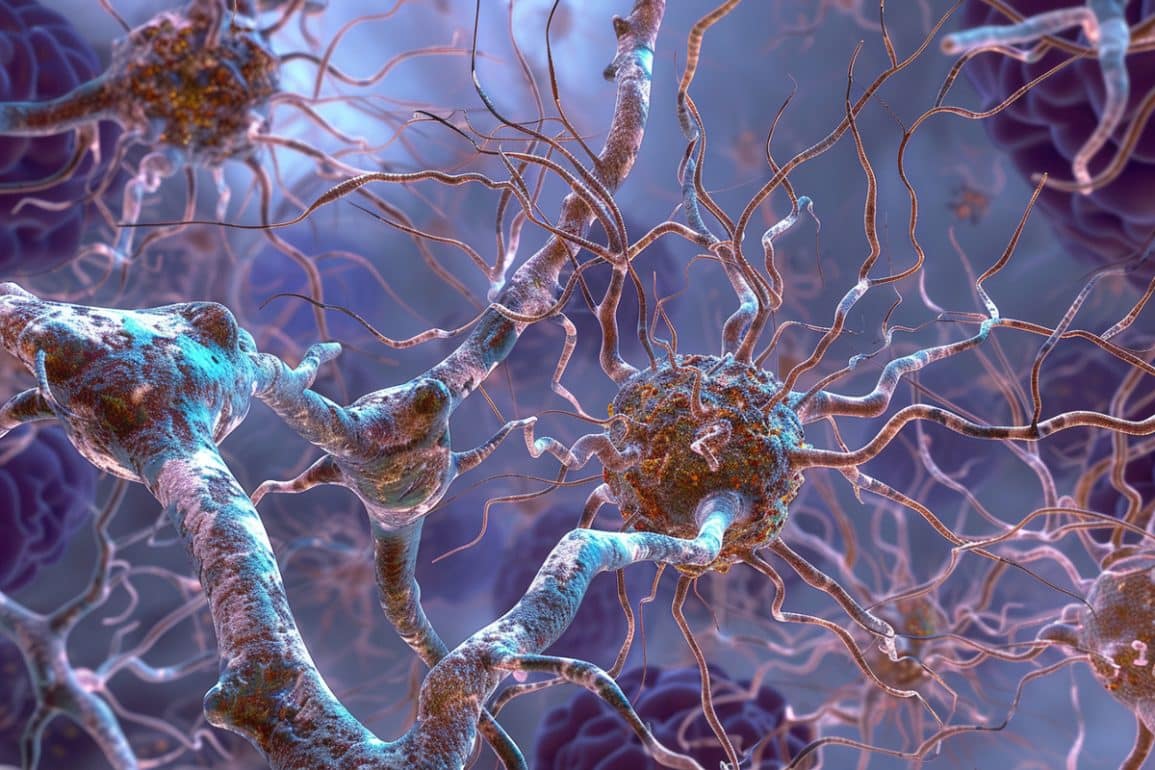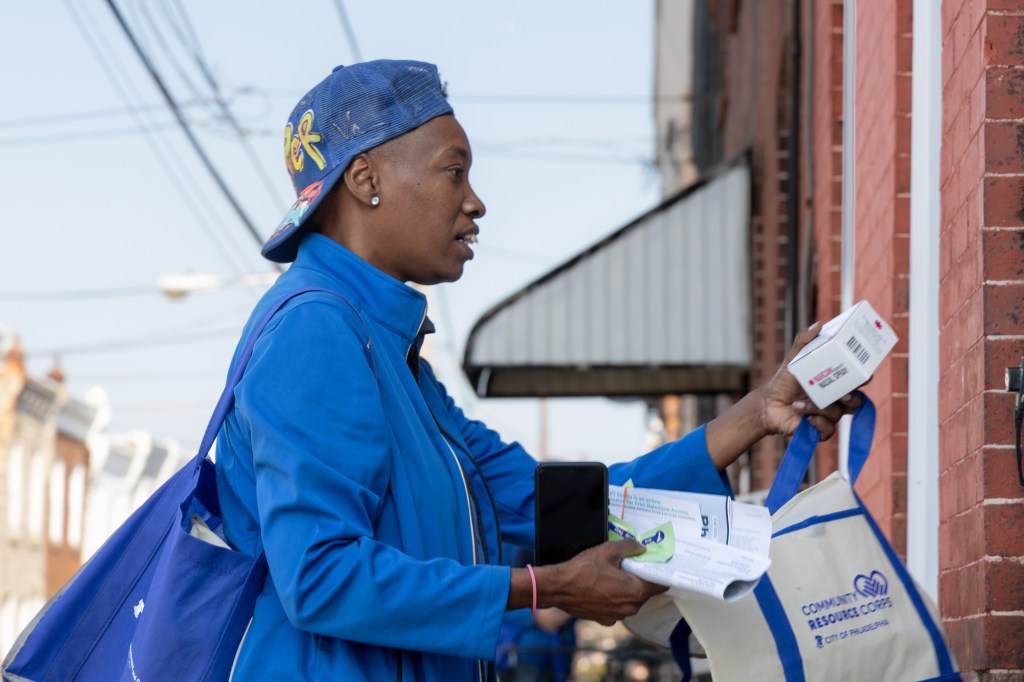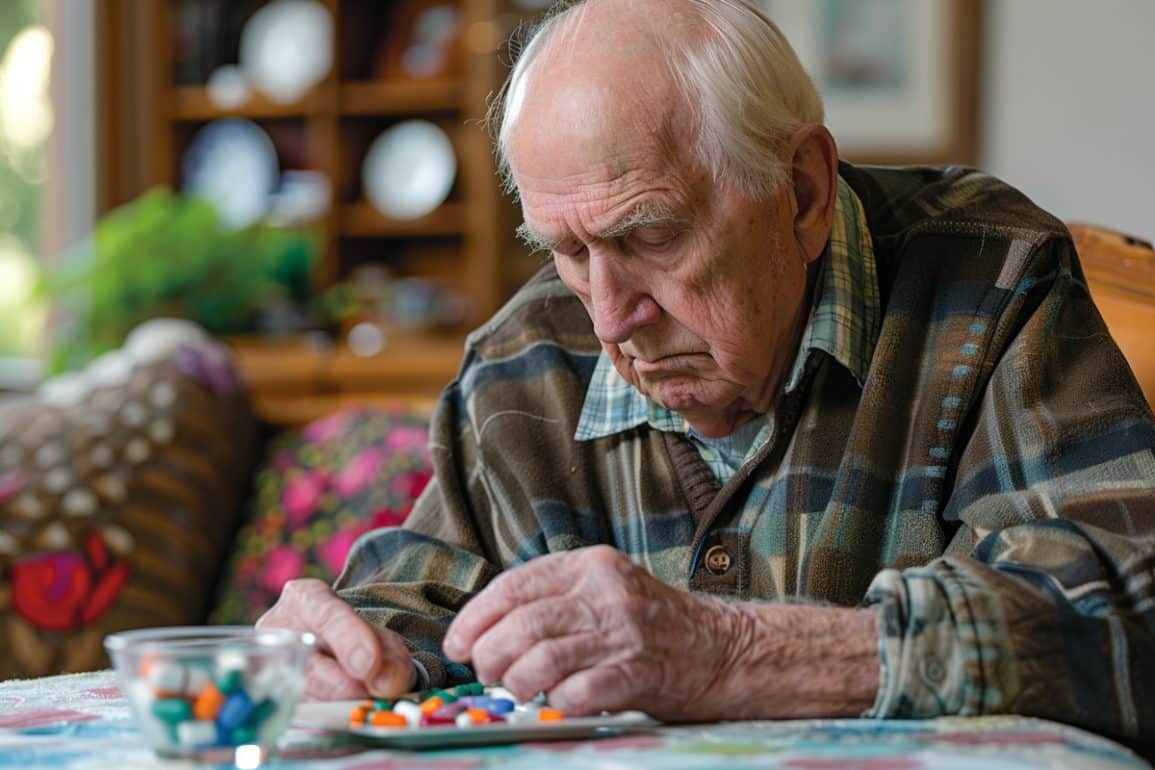23 Apr, 2024 | Admin | No Comments
Mental health, lack of services: Sask. children’s advocate highlights challenges

The Saskatchewan Advocate for Children and Youth highlighted areas where kids were struggling in the province.
 Neurons in Alzheimer’s disease patients tend to re-enter the cell cycle and quickly progress to senescence. Using advanced snRNA-seq techniques, researchers analyzed over 30,000 nuclei to track these changes, finding that these neurons often fail to complete the cell cycle and instead show signs of aging.
Neurons in Alzheimer’s disease patients tend to re-enter the cell cycle and quickly progress to senescence. Using advanced snRNA-seq techniques, researchers analyzed over 30,000 nuclei to track these changes, finding that these neurons often fail to complete the cell cycle and instead show signs of aging.
New technologies are making it easier for companies to fix prices and discriminate against individual consumers, the Biden administration’s top consumer watchdog said Tuesday.
Algorithms make it possible for companies to fix prices without explicitly coordinating with one another, posing a new test for regulators policing the market, said Lina Khan, chair of the Federal Trade Commission, during a media event hosted by KFF.
“I think we could be entering a somewhat novel era of pricing,” Khan told reporters.
Khan is regarded as one of the most aggressive antitrust regulators in recent U.S. history, and she has paid particular attention to the harm that technological advances can pose to consumers. Antitrust regulators at the FTC and the Justice Department set a record for merger challenges in the fiscal year that ended Sept. 30, 2022, according to Bloomberg News.
Last year, the FTC successfully blocked biotech company Illumina’s over $7 billion acquisition of cancer-screening company Grail. The FTC, Justice Department, and Health and Human Services Department launched a website on April 18, healthycompetition.gov, to make it easier for people to report suspected anticompetitive behavior in the health care industry.
The American Hospital Association, the industry’s largest trade group, has often criticized the Biden administration’s approach to antitrust enforcement. In comments in September on proposed guidance the FTC and Justice Department published for companies, the AHA said that “the guidelines reflect a fundamental hostility to mergers.”
Price fixing removes competition from the market and generally makes goods and services more expensive. The agency has argued in court filings that price fixing “is still illegal even if you are achieving it through an algorithm,” Khan said. “There’s no kind of algorithmic exemption to the antitrust laws.”
By simply using the same algorithms to set prices, companies can effectively charge the same “even if they’re not, you know, getting in a back room and kind of shaking hands and setting a price,” Khan said, using the example of residential property managers.
Khan said the commission is also scrutinizing the use of artificial intelligence and algorithms to set prices for individual consumers “based on all of this particular behavioral data about you: the websites you visited, you know, who you had lunch with, where you live.”
And as health care companies change the way they structure their businesses to maximize profits, the FTC is changing the way it analyzes behavior that could hurt consumers, Khan said.
Hiring people who can “help us look under the hood” of some inscrutable algorithms was a priority, Khan said. She said it’s already paid off in the form of legal actions “that are only possible because we had technologists on the team helping us figure out what are these algorithms doing.”
Traditionally, the FTC has policed health care by challenging local or regional hospital mergers that have the potential to reduce competition and raise prices. But consolidation in health care has evolved, Khan said.
Mergers of systems that don’t overlap geographically are increasing, she said. In addition, hospitals now often buy doctor practices, while pharmacy benefit managers start their own insurance companies or mail-order pharmacies — or vice versa — pursuing “vertical integration” that can hurt consumers, she said.
The FTC is hearing increasing complaints “about how these firms are using their monopoly power” and “exercising it in ways that’s resulting in higher prices for patients, less service, as well as worse conditions for health care workers,” Khan said.
Policing Noncompetes
Khan said she was surprised at how many health care workers responded to the commission’s recent proposal to ban “noncompete” clauses — agreements that can prevent employees from moving to new jobs. The FTC issued its final rule banning the practice on Tuesday. She said the ban was aimed at low-wage industries like fast food but that many of the comments in favor of the FTC’s plan came from health professions.
Health workers say noncompete agreements are “both personally devastating and also impeded patient care,” Khan said.
In some cases, doctors wrote that their patients “got really upset because they wanted to stick with me, but my hospital was saying I couldn’t,” Khan said. Some doctors ended up commuting long distances to prevent the rest of their families from having to move after they changed jobs, she said.
KFF Health News is a national newsroom that produces in-depth journalism about health issues and is one of the core operating programs at KFF—an independent source of health policy research, polling, and journalism. Learn more about KFF.
USE OUR CONTENT
This story can be republished for free (details).
23 Apr, 2024 | Admin | No Comments
Para frenar las muertes por fentanilo, reparten kits para revertir las sobredosis puerta por puerta

En una estrecha calle de townhouses y un taller mecánico en el vecindario Kensington, en el norte de Philadelphia, Marsella Elie subió los escalones y golpeó fuerte las puertas de las casas.
Un hombre de mediana edad abrió, con mirada cautelosa.
“Hola, señor, ¿cómo está hoy?”, le preguntó Elie, que tenía puesta una chaqueta con el logo de la Campana de la Libertad, del gobierno de la ciudad. “Mi nombre es Marsella. Estoy trabajando con la ciudad. ¿Ha oído hablar de las sobredosis que están ocurriendo en el vecindario, verdad?”.
El hombre asintió. Elie señaló los folletos que tenía sobre sobredosis de drogas y programas de tratamiento para la adicción. Levantó una caja de Narcan, una marca de naloxona, que puede revertir una sobredosis de opioides.
“Lo que estamos tratando de hacer es que esto llegue a todos los hogares. ¿Alguna vez ha oído hablar de esto antes?”, preguntó Elie antes de entregarle al hombre una bolsa de tela llena de folletos, tiras de prueba de fentanilo y la caja de Narcan.
Elie y otros trabajadores de medio tiempo de la ciudad y voluntarios forman parte de una campaña puerta a puerta a gran escala en Philadelphia que tiene como objetivo equipar los hogares con naloxona y otros suministros para prevenir sobredosis de drogas.
Los funcionarios de la ciudad esperan que este enfoque proactivo transforme a la naloxona en un artículo que esté en los botiquines, para evitar que las personas mueran por sobredosis, especialmente los residentes negros.
En Philadelphia, en 2022, según datos de la ciudad, un récord de 1,413 personas murieron por sobredosis de drogas. Entre los residentes negros, las muertes aumentaron un 20% respecto al año anterior, y muchas ocurrieron en casas.
“Lo mejor que podemos hacer para que estos productos sean más accesibles es simplemente dárselos a las personas”, dijo Keli McLoyd, subdirectora de la Unidad de Respuesta a Opioides de la ciudad, hablando sobre la bolsa de tela con naloxona y otros suministros.
“No le estamos preguntando si está usando drogas. El objetivo aquí es realmente construir una responsabilidad colectiva. Como personas de comunidades minoritarias, como vimos durante la epidemia de covid, nadie viene a salvarnos. Para nosotros, esta es una herramienta que podemos usar para salvarnos a nosotros mismos”.
Esta iniciativa de distribución tiene como objetivo llevar suministros de prevención directamente a personas que de otro modo no los buscarían por sí mismas, y concientizar sobre las sobredosis más allá de Kensington, el epicentro de la epidemia de adicción de la ciudad.
Los encuestadores planean golpear más de 100,000 puertas en los “puntos calientes” de Philadelphia, códigos postales con tasas crecientes de sobredosis de opioides, muchos en comunidades minoritarias.
El aumento de las disparidades raciales en las muertes por sobredosis es una de las consecuencias a largo plazo de la guerra contra las drogas, dijo McLoyd. Las políticas de esa campaña nacional llevaron a décadas de tácticas policiales agresivas, perfil racial y largas condenas de prisión, afectando de manera desproporcionada a personas de color y a sus comunidades.
La investigación muestra que los afroamericanos siguen representando un número desproporcionado de arrestos por drogas y servicios de protección infantil.
“Por eso, está muy claro por qué las personas de minorías podrían ser reacias a levantar la mano y decir: ‘Soy una persona que usa drogas, necesito esos recursos’”, dijo McLoyd.
Otras comunidades han distribuido naloxona y otros suministros, aunque en menor escala que Philadelphia. Lo que está haciendo Philadelphia podría convertirse en un modelo para otros lugares densamente poblados, dijo Daliah Heller, vicepresidenta de iniciativas sobre el uso de drogas en Vital Strategies, una organización de salud pública que trabaja con gobiernos locales en siete estados para abordar la epidemia de opioides.
“Hay algo intensamente personal en un compromiso humano”, dijo Heller. “Y que alguien toque a tu puerta para hablar sobre el uso de drogas y el riesgo de sobredosis y que haya algo que se pueda hacer, creo que es realmente poderoso”.
A lo largo de los años, la naloxona se ha vuelto más accesible que nunca, apuntó Heller. Ahora se puede pedir por internet y se puede recibir por correo, está disponible en máquinas expendedoras especializadas y algunas farmacias ahora venden el spray nasal de Narcan sin receta.
Pero decenas de miles de estadounidenses siguen muriendo por sobredosis de opioides cada año.
Eso significa que los esfuerzos de prevención y los mensajes sobre la crisis aún no llegan a algunas personas, dijo Heller. Y para Heller, llegar a las personas significa ir donde están. “Tenemos que pensar así cuando pensamos en la distribución de naloxona”.
El proyecto de divulgación en Philadelphia está financiado en parte por los pagos de acuerdos de demandas nacionales contra fabricantes y distribuidores de opioides, parte de los cuales recibió la ciudad.
Se espera que la ciudad reciba alrededor de $200 millones en aproximadamente 18 años de acuerdos con AmerisourceBergen, Cardinal Health, McKesson y Johnson & Johnson.
De la iniciativa forman parte muchas de las mismas personas que comenzaron a hacer divulgación como parte del censo de 2020.
No todos responden a la puerta. Algunos no están en casa. En esos casos, los trabajadores dejan un volante en el picaporte de la puerta que ofrece información sobre los riesgos de las sobredosis, y contactos para obtener más recursos.
Los equipos de encuestadores, a menudo con intérpretes de idiomas, hacen una segunda ronda de visitas en el vecindario para llegar a las personas que no vieron la primera vez.
En un jueves reciente, los encuestadores de Philadelphia estaban tocando puertas en los vecindarios de Franklinville y Hunting Park. Según datos de la ciudad, en este código postal, aproximadamente 85 personas murieron por sobredosis de drogas en 2022. Eso es menos que las 193 personas que murieron por sobredosis en Kensington el mismo año, pero mucho más que las pocas muertes vistas en los vecindarios más ricos de la ciudad.
Los encuestadores se acercaron a una residente, Katherine Camacho, en la acera, cuando salía de su garage. Camacho les dijo que estaba al tanto del problema de las sobredosis en su comunidad y luego aceptó con entusiasmo una caja de Narcan. “Voy a llevar esto conmigo, porque, como dije, a veces estás en la calle conduciendo a algún lugar y podrías salvar una vida”, les dijo Camacho.
En cuanto al esfuerzo de divulgación de Philadelphia, Camacho dijo que cree que “Dios está poniendo a estas personas para ayudar”. Mientras entraba en su casa llevando la caja de Narcan, agregó que quería hacer su parte para ayudar.
KFF Health News is a national newsroom that produces in-depth journalism about health issues and is one of the core operating programs at KFF—an independent source of health policy research, polling, and journalism. Learn more about KFF.
USE OUR CONTENT
This story can be republished for free (details).
 A new study reveals a biological link between enjoying nature and reduced inflammation levels, which could help in preventing or managing chronic inflammation-related diseases like heart disease and diabetes. The study analyzed data from the Midlife in the U.S. (MIDUS) survey, focusing on 1,244 participants, and found that frequent positive interactions with nature correlated with lower levels of three key inflammation markers.
A new study reveals a biological link between enjoying nature and reduced inflammation levels, which could help in preventing or managing chronic inflammation-related diseases like heart disease and diabetes. The study analyzed data from the Midlife in the U.S. (MIDUS) survey, focusing on 1,244 participants, and found that frequent positive interactions with nature correlated with lower levels of three key inflammation markers.
 Socioeconomic status, lifestyle, and psychological factors significantly influence the development of chronic musculoskeletal pain after injury. The study found that individuals from lower socioeconomic backgrounds are twice as likely to experience chronic pain, and those with additional risk factors such as smoking, fear of movement, and poor support networks are up to seven times more likely.
Socioeconomic status, lifestyle, and psychological factors significantly influence the development of chronic musculoskeletal pain after injury. The study found that individuals from lower socioeconomic backgrounds are twice as likely to experience chronic pain, and those with additional risk factors such as smoking, fear of movement, and poor support networks are up to seven times more likely.
 A new study revealed significant risks associated with antipsychotic use in dementia patients, including increased chances of stroke, heart failure, pneumonia, and other serious conditions. The research analyzed data from 173,910 dementia patients in England, tracking those prescribed antipsychotics post-diagnosis against those who were not.
A new study revealed significant risks associated with antipsychotic use in dementia patients, including increased chances of stroke, heart failure, pneumonia, and other serious conditions. The research analyzed data from 173,910 dementia patients in England, tracking those prescribed antipsychotics post-diagnosis against those who were not.



